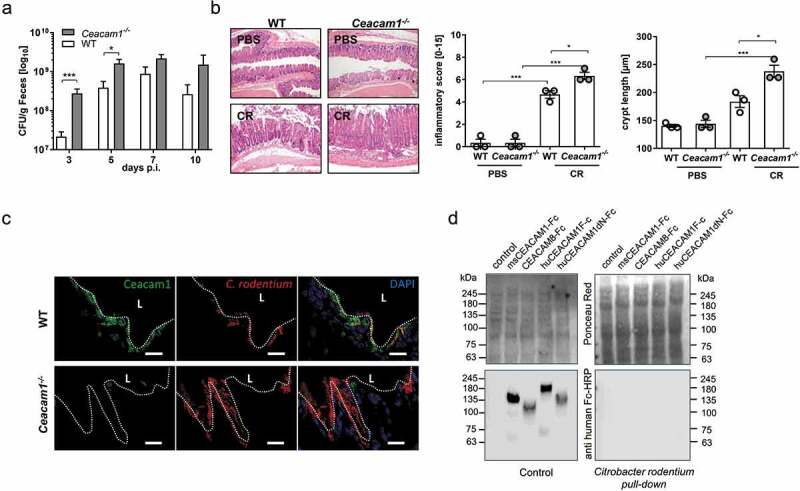Figure 1.

CEACAM1 deficiency leads to enhanced susceptibility to C. rodentium induced colitis. Ceacam1−/− and C57Bl/6 mice were orally infected with ~ 2 × 109 colony forming units (CFU) of C. rodentium. (a) At indicated days post infection (days p.i.), fecal pellets were collected to determine the colony forming units (CFU) per gram feces. (n = 31 each group). (b) Representative H&E staining of colon sections from PBS or C. rodentium infected WT or Ceacam1−/− mice 10 days post infection. Inflammatory score and crypt length of uninfected WT or Ceacam1−/− mice, and infected WT and Ceacam1−/− mice 10 days post C. rodentium infection. (c) Frozen section (5 µm) of the rectal colon tissue harvested from mice 10 days post infection. C. rodentium (red), CEACAM1 (green) and DAPI (blue). (One representative of n = 4 is shown, scale bar = 20 µm.) (d) The potential interaction of C. rodentium to human and mouse CEACAMs were analyzed by pull down experiments followed by western blot analysis. CEACAM8-Fc and the CEACAM1dN-Fc lacking the N-domain served as negative controls for this experiment. Ponceau Red staining was used to demonstrate loading of the bacterial extracts. One representative of three independent experiments is shown. All data are presented as mean ± SEM. Statistics were performed using the one-way ANOVA test followed by Bonferroni’s multiple comparison test (*, p < .05; **, p < .01; ***, p < .001).
